In network infrastructure, having an ordered cabling system is a “must” to reduce cable failure. There are two essential gears that contribute to this organization: cable managers and patch panels. It is essential to understand the roles and differences between cable managers and patch panels, as well as how they work together for a well-organized, reliable, and scalable network.
What is a Cable Manager?
A cable manager is an organizational tool designed to keep your cables neat and tidy within a network rack or server room. Its principal role is to route and secure cables, preventing tangles and granting ease of access for maintenance or upgrades. Though the cable manager is not directly related to network transmission, it simplifies cable management and enhances network infrastructure. The largest function of a cable manager is to ensure the path for cabling and improve air flow and space in office networks and data centers.

Cable Manager Types
Cable managers come in different types from different aspects.
Horizontal vs. Vertical Cable Managers
Horizontal cable managers are usually mounted between equipment within racks, and they organize cables horizontally. Usually, they are installed on EIA 19-inch racks or cabinets in data centers. They include finger ducts, D-rings, and brush strips. While vertical cable managers are often attached vertically on the sides of the racks. They can also be mounted on 19-inch standard racks or cabinets in server rooms or data centers. Vertical cable managers feature cables running vertically, which typically provides more space and organization options.
Types Based on Rack Units
Cable managers come in different sizes to fit different racks. There are 1U and 2U horizontal cable managers and 1U, 5U, 42U, and 45U vertical cable managers. 1U and 2U cable managers are ideal for horizontal cable management between devices, while vertical cable managers are more suitable for large-scale cabling.
Types Based on Styles
- D-ring Cable Manager: D-ring cable manager features open metal or plastic rings in a D shape, and it can be mounted on panels. D-ring cable managers come in different sizes for different cable capacities. It is ideal for light to moderate cabling needs.
- Finger Duct Cable Manager: The Finger Duct Cable Manager maximizes cable management in high-density data centers. It features vertical or horizontal slots and a removable cover for easy cable installation.
- Brush Cable Manager: The Brush cable manager has a row of bristles, allowing cables to pass through and maintaining airflow. It is best for small network installations where minimal cable routing is needed.
What is a Patch Panel?
A patch panel is a piece of hardware that unites network cables, permitting easy management, rearrangement, and monitoring. It is a central point where you connect the cables, and it significantly makes network management simpler. While a network can function well without a patch panel, managing cables becomes difficult when multiple switches and connections are involved, leading to a cluttered and inefficient setup. Patch panels are often used in telecommunication rooms and large network installations.
Types of Patch Panels
- Copper Patch Panels: Copper Patch panels use RJ45 ports and are a great fit for Ethernet networks. You find them in Cat5e, Cat6, and Cat6a categories, supporting various speeds and bandwidth.
- Fiber Patch Panels: Used with fiber optic networks, these panels facilitate high-speed data transmission with almost no to zero signal loss.
Cable Manager vs. Patch Panel
Although both cable managers and patch panels organize cables, their roles are totally different:
- Cable Managers: Their main function is the physical organization of cables, guiding and securing them to avoid twists and eventual damage. Cable managers enhance air flow and reduce overheating.
- Patch Panels: Patch panels are connection points that simplify cable management at the network level and make reconfiguration and monitoring hassle-free. They cannot only reduce cable clutter but also simplify equipment maintenance and network upgrades.
How Do They Work and Complement Each Other?
In many settings, predominantly in large installations, cable managers and patch panels are used together to take network efficiency to its maximum potential. Patch panels manage network connectivity, while cable managers keep the cables organized and easy to access.
Steps to Optimize Cable Management
Now, let’s review how to proficiently combine cable managers and patch panels in your network:
- Evaluate Your Needs: Define the size of your network and the number of cables. If you plan a future expansion, leave room for it.
- Pick the Correct Equipment: Choose cable managers and patch panels that suit your network type (for example, copper or fiber). Make sure they are compatible with your current hardware.
- Organize Smartly: Install the patch panels centrally within the rack to cut cable lengths. Place the cable managers tactically around patch panels for easy access.
- Label the Cables: Label the cables and ports meticulously so they can be quickly identified. Use color-coding to distinguish between the diverse types of connections or purposes (functions).
Final Thoughts
Organizing cables using cable managers and patch panels is a requirement for network reliability, scalability, and easy maintenance. Choosing the correct combination of tools promises an efficient, straightforward, accessible, and reliable network.
Don’t neglect careful planning. Take some time to design your cable organization strategy, select suitable devices and gear equipment, and adopt the habit of checking your devices and cables regularly.
For more information on this topic, you can keep up on our blogs. While VCELINK offers general and basic information for our customers and other visitors to the website, it’s not professional advice.

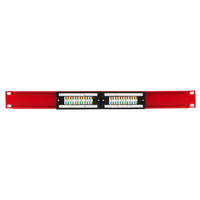
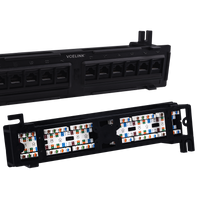
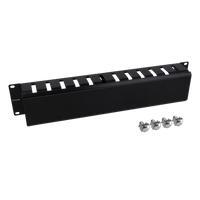
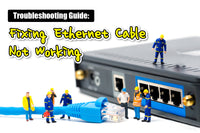
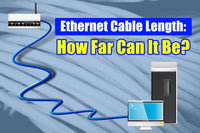
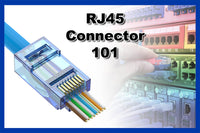
Be the first one to comment.
Leave a comment